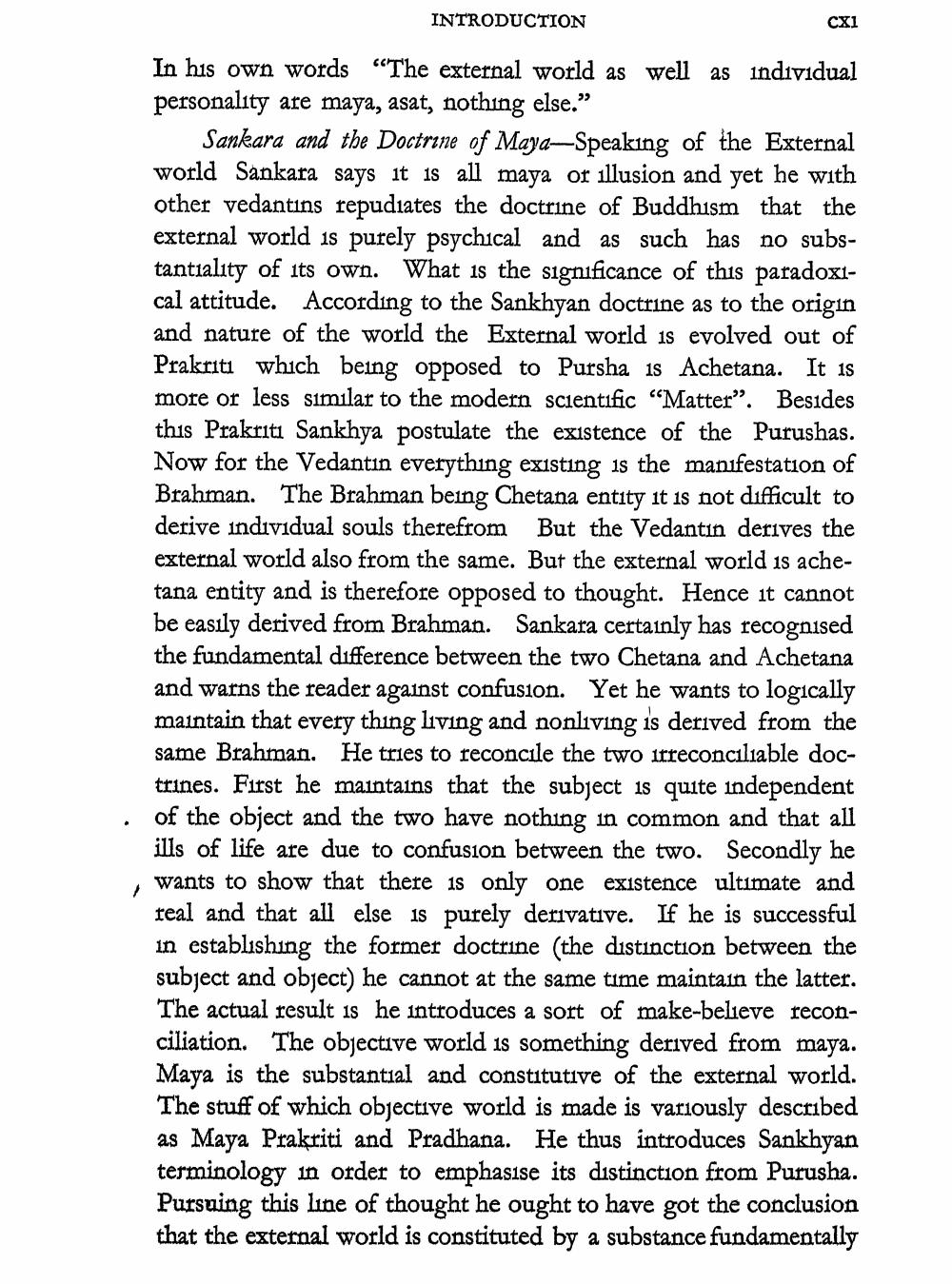________________
INTRODUCTION
CX1
In his own words “The external world as well as individual personality are maya, asat, nothing else.”
Sankara and the Doctrine of Maya—Speaking of the External world Sankara says it is all maya or illusion and yet he with other vedantins repudiates the doctrine of Buddhism that the external world is purely psychical and as such has no substantiality of its own. What is the significance of this paradoxical attitude. According to the Sankhyan doctrine as to the origin and nature of the world the External world is evolved out of Prakriti which being opposed to Pursha is Achetana. It is more or less similar to the modern scientific “Matter”. Besides this Prakriti Sankhya postulate the existence of the Purushas. Now for the Vedantin everything existing is the manifestation of Brahman. The Brahman being Chetana entity it is not difficult to derive individual souls therefrom But the Vedantın derives the external world also from the same. But the external world is achetana entity and is therefore opposed to thought. Hence it cannot be easily derived from Brahman. Sankara certainly has recognised the fundamental difference between the two Chetana and Achetana and warns the reader against confusion. Yet he wants to logically maintain that every thing living and nonliving is derived from the same Brahman. He tries to reconcile the two irreconciliable doctrines. First he maintains that the subject is quite independent of the object and the two have nothing in common and that all ills of life are due to confusion between the two. Secondly he wants to show that there is only one existence ultimate and real and that all else is purely derivative. If he is successful in establishing the former doctrine (the distinction between the subject and object) he cannot at the same time maintain the latter. The actual result is he introduces a sort of make-believe reconciliation. The objective world is something derived from maya. Maya is the substantial and constitutive of the external world. The stuff of which objective world is made is variously described as Maya Prakriti and Pradhana. He thus introduces Sankhyan terminology in order to emphasise its distinction from Purusha. Pursuing this line of thought he ought to have got the conclusion that the external world is constituted by a substance fundamentally




